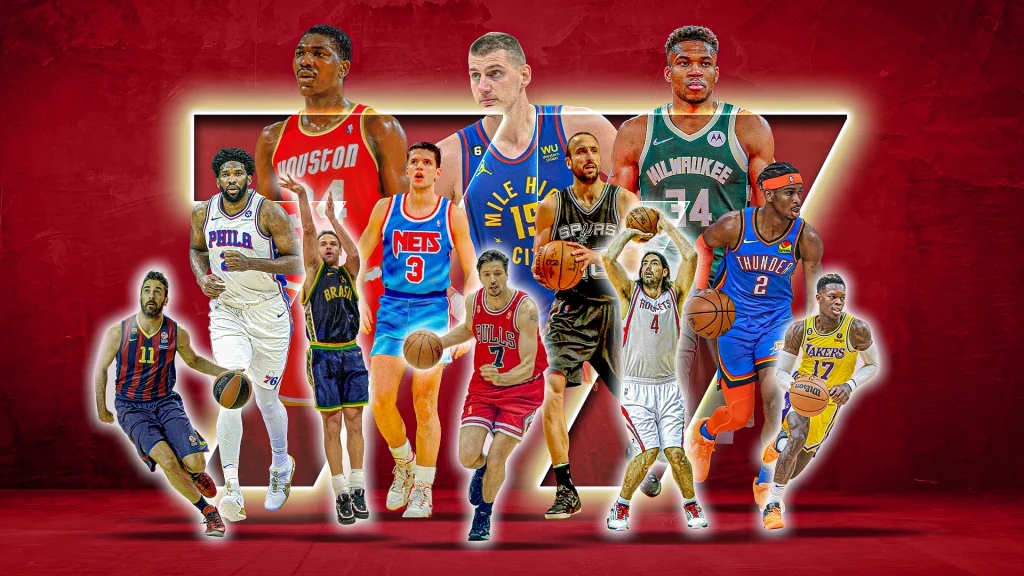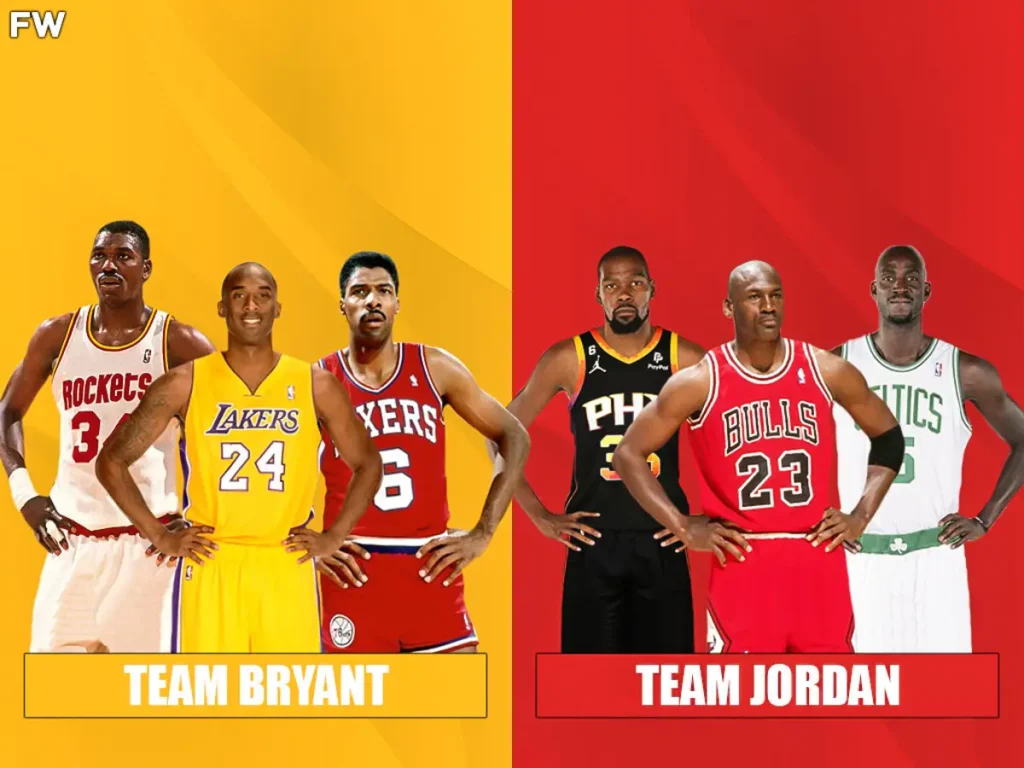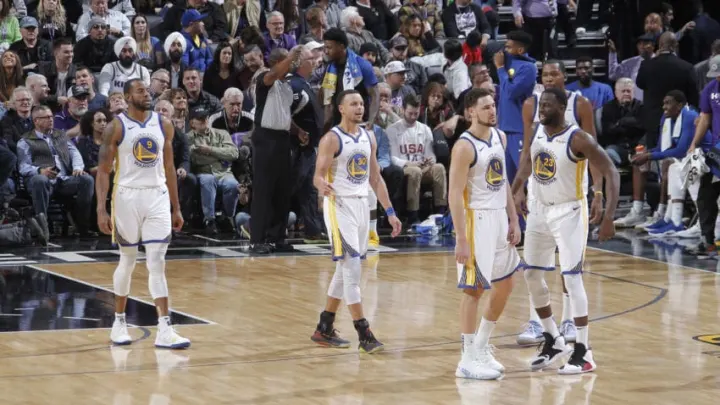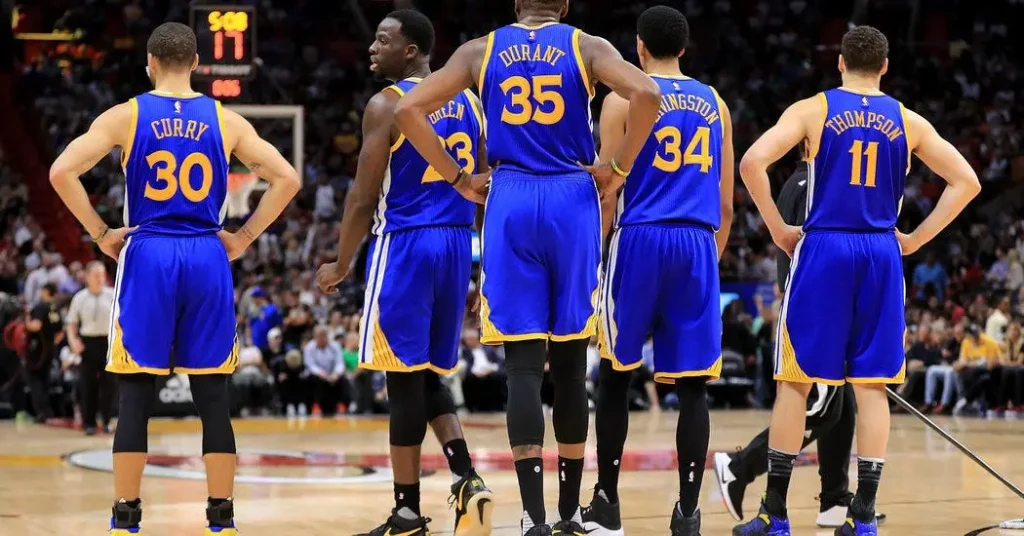The NBA has seen many legendary teams, from Michael Jordan’s Chicago Bulls to the golden era of the Los Angeles Lakers. But if you had to choose only one greatest team of all time, which would be the most worthy name? In this article, we will review the teams with impressive records, overwhelming play, and far-reaching influence to find the Best NBA Basketball Team Ever. Discover now!

2012-13 Miami Heat: A Basketball Juggernaut
This Heat squad stands as a paragon of hoops excellence and team synergy. Their 66-16 regular season record speaks volumes. The Big Three – LeBron James, Dwyane Wade, and Chris Bosh – led this unstoppable force.
Their 27-game winning streak, stretching 1,728 miles (2,781 kilometers) from coast to coast, ranks second in NBA history. They didn’t just win; they steamrolled opponents with a high-octane offense and smothering defense. Coach Erik Spoelstra’s revolutionary small-ball lineup forced other teams to adapt or perish.
The Heat’s dominance extended beyond the regular season. They clawed through grueling playoff series, including a nail-biting seven-game Eastern Conference Finals against the Indiana Pacers. In the NBA Finals, they outlasted the San Antonio Spurs in a thrilling seven-game series, showcasing their grit and clutch performance.
This team’s legacy is cemented by their unselfish style. Crisp ball movement and defensive switching created a blueprint for modern NBA success. The 2012-2013 Heat weren’t just a collection of stars; they were a cohesive unit that maximized each other’s potential.
1982-83 Philadelphia 76ers
The 2015-16 Philadelphia 76ers, with their rock-bottom 10-72 record, exemplify a bold strategy for long-term success. These ‘Process Sixers’ embraced a controversial rebuild, prioritizing high draft picks over immediate wins.
This squad’s greatness lies not in on-court performance, but in their gutsy approach. By fielding a subpar roster, they positioned themselves for future talent acquisition. This strategy, while tough on fans, laid groundwork for a winning future.
Young talents like Jahlil Okafor and Nerlens Noel emerged during this season, later becoming valuable trade assets. The organization’s steadfast commitment to their vision, despite criticism, showcased rare patience in pro sports.
While not conventionally elite, this 76ers team pioneered a unique team-building method. Their long-term focus, despite short-term struggles, demonstrated excellence in strategic planning. The payoff came later, as the 76ers transformed into perennial playoff contenders, proving that sometimes you need to take a 10-foot (3-meter) step back to make a 100-foot (30.5-meter) leap forward.
This approach influenced other franchises, challenging traditional rebuilding methods. The 76ers’ willingness to endure a 72-loss season for future gains redefined organizational resilience in the NBA.
Their strategy involved calculated risks, meticulous player evaluation, and unwavering commitment to a long-term vision. This unconventional path to success sparked debates about team-building ethics and effectiveness in professional basketball.
The 2015-16 season became a pivotal moment in 76ers history, setting the stage for future stars and championship aspirations. It redefined fan expectations and tested loyalty, ultimately reshaping the franchise’s trajectory.
2000-01 Los Angeles Lakers

The 2000-01 Los Angeles Lakers epitomize NBA greatness, showcasing unparalleled dominance and star power. Shaquille O’Neal and Kobe Bryant led this juggernaut, crushing opponents with ease.
Their 56-26 regular season record belies their playoff brilliance. The Lakers steamrolled through the postseason with a 15-1 run, sweeping the first three rounds before facing the Philadelphia 76ers in the Finals. They dropped Game 1 but bounced back to win four straight, clinching the championship.
Shaq’s MVP-caliber season saw him average 28.7 points and 12.7 rebounds per game (13.1 points and 5.8 rebounds per 40 minutes). Kobe, ascending to superstardom, complemented O’Neal with his scoring prowess and tenacious defense. Derek Fisher, Rick Fox, and Robert Horry provided crucial depth and experience.
Under Phil Jackson’s guidance, the Lakers mastered the triangle offense, creating mismatches and open looks that left opponents flummoxed. Their offensive firepower and defensive intensity made them nearly invincible, solidifying their status as one of the NBA’s all-time great teams.
The Lakers’ dominance extended beyond the court, covering 94 feet (28.65 meters) with ease. Their fast-break offense often outpaced opponents, leaving them in the dust. Shaq’s imposing 7’1′ (2.16 m) frame and Kobe’s 6’6′ (1.98 m) athleticism created a one-two punch that few teams could counter.
This Lakers squad exemplified basketball excellence, blending individual talent with team synergy. Their cohesive play style, adaptability, and mental toughness set them apart from other championship teams. The 2000-01 Lakers didn’t just win; they redefined what it meant to dominate in the NBA.
1986-87 Los Angeles Lakers
The 1986-87 Los Angeles Lakers: Basketball Perfection Personified
Magic Johnson led the unstoppable ’86-87 Lakers to a 65-17 regular season record. This team bulldozed through the playoffs, clinching the NBA championship with flair.
The Lakers’ roster boasted unparalleled talent. Johnson, at his peak, orchestrated the offense with wizard-like precision. Kareem Abdul-Jabbar, though aging, remained a giant in the paint. James Worthy, ‘Big Game James,’ delivered clutch performances consistently. Byron Scott, A.C. Green, and Michael Cooper rounded out the squad with scoring punch, defensive grit, and relentless hustle.
‘Showtime’ defined the Lakers’ high-octane offense. They sprinted the court, covering 94 feet (28.65 meters) in seconds, overwhelming opponents with lightning-fast breaks and pinpoint passes. Their fluid scoring left defenses in disarray and fans awestruck. Defensively, they excelled too, with Cooper snagging Defensive Player of the Year honors.
Pat Riley’s coaching genius molded this team into a well-oiled machine. Their championship run, conquering tough Western Conference foes and outlasting the Boston Celtics in a grueling Finals, solidified their legendary status.
The ’86-87 Lakers embodied basketball nirvana. Their blend of individual brilliance and seamless teamwork set a gold standard for NBA excellence. This squad’s legacy continues to inspire and awe basketball aficionados worldwide.
1990-91 Chicago Bulls

The 1990-91 Chicago Bulls: A Basketball Revolution
As the ’90s began, a hoops powerhouse emerged in the Windy City. The 1990-91 Chicago Bulls, spearheaded by the peerless Michael Jordan, set a new standard for NBA excellence.
This Bulls squad wasn’t a one-man show. Scottie Pippen had evolved into a defensive juggernaut and offensive threat. Horace Grant, standing 6 feet 10 inches (2.08 meters) tall, brought grit and board dominance. Sharpshooter John Paxson and seasoned center Bill Cartwright completed a starting five that struck fear into opponents.
Phil Jackson’s innovative triangle offense propelled the Bulls to a 61-21 regular season record. In the playoffs, they steamrolled the Eastern Conference, dropping only one game en route to the Finals.
The championship series pitted them against Magic Johnson’s Lakers, the team that owned the ’80s. The Bulls dismantled them in five games, announcing their arrival as the NBA’s new alpha dogs.
What set this team apart was their unmatched blend of offense and defense. They could outscore you with their fluid, team-oriented attack or lock you down with suffocating D. Jordan’s scoring prowess (averaging 31.5 points per game), Pippen’s versatility, and the team’s chemistry made them a force of nature.
The 1990-91 Bulls weren’t just great; they were the vanguard of a dynasty that would define basketball for a generation. Their success laid the groundwork for five more championships in the decade, cementing their legacy as one of the greatest teams in NBA history.
Their impact extended beyond the 94-foot (28.65-meter) court. The Bulls became a global phenomenon, with Jordan as the face of basketball worldwide. They turned Chicago into a basketball mecca, inspiring countless young players to pick up a ball and dream big.
The 1990-91 season marked the beginning of an era where the Bulls didn’t just play basketball – they redefined it. Their legacy continues to shape the sport today, serving as a benchmark for excellence and teamwork in professional athletics.
1985-86 Boston Celtics
The 1985-86 Boston Celtics: A Basketball Juggernaut
Larry Bird’s Celtics dominated the hardwood in ’85-86, setting the gold standard for NBA excellence. This squad, packed with Hall of Fame talent, showcased unparalleled basketball IQ and teamwork.
Their regular-season record of 67-15 was staggering. At the Boston Garden, they were nearly invincible, dropping only one game on their home court. Bird, at his peak, averaged a triple-double threat: 25.8 points, 9.8 rebounds, and 6.8 assists per game. This stellar performance clinched his third straight MVP award.
Bird’s supporting cast was equally formidable. Kevin McHale and Robert Parish formed a towering frontcourt, standing at 6 feet 10 inches (2.08 meters) and 7 feet (2.13 meters) respectively. Dennis Johnson and Danny Ainge manned the backcourt with precision. Bill Walton, the 6-foot-11-inch (2.11-meter) sixth man, added depth and versatility off the bench.
The Celtics’ playoff run was a masterclass in basketball strategy. They lost only three games en route to the championship, crushing the Houston Rockets in the Finals. Their court vision and adaptability made them an unstoppable force.
What set this team apart was their seamless blend of individual brilliance and collective harmony. They played with a basketball IQ that’s rarely been matched, dissecting opponents’ weaknesses with surgical precision.
Key to their success was their ability to control the tempo, whether it was pushing the pace in transition or slowing the game down in the half-court. Their offensive arsenal was diverse, from Bird’s deadly outside shooting to McHale’s unstoppable post moves.
Defensively, they were equally imposing. Parish anchored the paint, while Johnson locked down opposing guards. Their team defense was a well-oiled machine, rotating with precision and communication.
The ’85-86 Celtics weren’t just a team; they were a basketball phenomenon. Their legacy continues to influence the game today, setting a benchmark for teamwork, skill, and basketball intelligence that few have matched.
1970-71 Milwaukee Bucks
The 1970-71 Milwaukee Bucks: A Basketball Juggernaut
Few teams in NBA history match the dominance of the 1970-71 Milwaukee Bucks. Led by Kareem Abdul-Jabbar (then Lew Alcindor) and Oscar Robertson, this squad bulldozed through the season and playoffs.
The Bucks’ regular-season record of 66-16 speaks volumes. Abdul-Jabbar, a sophomore sensation, averaged 31.7 points and 16 rebounds per game. Robertson, the ‘Big O,’ brought veteran savvy and all-around excellence, perfectly complementing Abdul-Jabbar’s paint dominance.
Their playoff run was historic. They swept the Western Conference, crushing the San Francisco Warriors and Los Angeles Lakers. In the NBA Finals, they demolished the Baltimore Bullets 4-0.
The Bucks’ playoff stats are staggering: 12-2 overall, with an average victory margin of 14.5 points (36.8 centimeters). This level of supremacy in both regular season and playoffs is rare in NBA annals.
Key factors in their success:
1. Dynamic duo: Abdul-Jabbar and Robertson
2. Offensive firepower: 118.4 points per game
3. Defensive prowess: Allowing only 106.2 points per game
4. Team chemistry: Unselfish play and clear roles
The Bucks’ dominance extended beyond the court. They revolutionized basketball strategy, forcing teams to adapt to their high-powered offense and suffocating defense.
This Milwaukee team wasn’t just great; they were a hoops powerhouse that set the bar for excellence. Their legacy continues to influence the game today, serving as a benchmark for team success and individual brilliance.
1971-72 Los Angeles Lakers
The 1971-72 Los Angeles Lakers set the gold standard for NBA dominance. Their record-shattering 33-game winning streak remains unmatched. Led by the powerhouse trio of Wilt Chamberlain, Jerry West, and Gail Goodrich, this team revolutionized basketball.
Coach Bill Sharman’s fast-break offense transformed the game. The Lakers averaged a whopping 121 points per game while limiting opponents to 108.7. Their net rating of +12.3 points per 100 possessions still ranks among the NBA’s best.
Their 69-13 regular-season record (a .841 winning percentage) was groundbreaking, surpassed only twice since. The Lakers’ dominance continued in the playoffs, crushing the Chicago Bulls and Milwaukee Bucks before clinching the championship against the New York Knicks in five games.
This Lakers squad blended individual talent with unparalleled team chemistry. Chamberlain’s rebounding prowess (23.8 per game) and defensive wall, West’s clutch scoring (25.8 points per game) and floor generalship, and Goodrich’s sharpshooter accuracy (25.9 points per game) created a perfect storm. Role players Happy Hairston and Jim McMillian provided crucial support.
The 1971-72 Lakers weren’t just exceptional; they were transformative. Their style of play, covering 94 feet (28.65 meters) of hardwood, influenced future generations and established a new benchmark for NBA excellence.
Their legacy lives on in the annals of basketball history, serving as a testament to the power of teamwork, innovation, and relentless pursuit of greatness. The 1971-72 Lakers remain a touchstone for evaluating team success in professional basketball.
2016-17 Golden State Warriors

The 2016-17 Golden State Warriors revolutionized basketball, setting new standards for NBA excellence. This team, featuring Stephen Curry, Kevin Durant, Klay Thompson, and Draymond Green, showcased unmatched shooting, playmaking, and defensive versatility.
Their 67-15 regular season record impressed, but their playoff performance cemented their legacy. The Warriors swept through the Western Conference, going 12-0 before facing the Cleveland Cavaliers in the NBA Finals. They clinically dismantled opponents, winning the championship in five games.
The Warriors’ innovative style of play set them apart. They embraced small-ball lineups, prioritized three-point shooting, and emphasized ball movement. Their ‘death lineup’ with Durant at power forward stretched defenses to their limits, creating nearly unstoppable offensive opportunities.
Durant’s addition to an already stellar team created a perfect storm of talent and tactical innovation. His scoring prowess (averaging 25.1 points per game or 7.65 points per quarter) complemented Curry’s otherworldly shooting and Thompson’s catch-and-shoot excellence. Green’s defensive genius and playmaking ability tied it all together.
This Warriors team didn’t just win; they redefined basketball possibilities. Their influence is evident in today’s team-building strategies and playing styles. Fast, skilled, and versatile, the 2016-17 Warriors represent the pinnacle of modern basketball, earning their place among the greatest NBA teams ever assembled.
The Warriors’ success stemmed from their unique blend of individual talent and team-oriented play. Their ball movement (averaging 30.4 assists per game) and floor spacing created open shots, while their defensive switching disrupted opponents’ offensive flow.
This team’s impact extends beyond their on-court success. They influenced the league’s strategic direction, emphasizing positionless basketball and three-point shooting. Their style of play has become a blueprint for modern NBA teams, shaping roster construction and offensive schemes league-wide.
The 2016-17 Warriors stand as a testament to the power of innovation, teamwork, and individual brilliance in basketball. Their legacy continues to influence the sport, making them a pivotal chapter in NBA history.
1995-96 Chicago Bulls
The 1995-96 Chicago Bulls: A Basketball Juggernaut
The ’95-96 Bulls set the NBA ablaze, notching an astounding 72-10 record. This 87.8% win rate stood unchallenged for 20 years. Michael Jordan, fresh from his baseball stint, spearheaded this powerhouse.
Jordan’s stellar supporting cast included:
– Scottie Pippen: A Swiss Army knife on court
– Dennis Rodman: The rebound king with technicolor hair
– Steve Kerr: Sharpshooter extraordinaire
– Toni Kukoc: The Croatian sensation
Phil Jackson’s triangle offense maximized player strengths. The Bulls’ suffocating defense, led by Jordan and Pippen, covered 94 feet (28.65 meters) of hardwood like a blanket.
They didn’t just win; they crushed spirits. Their playoff run was a steamroller, flattening opponents en route to the Larry O’Brien Trophy. They bested the Seattle SuperSonics in the Finals, capping a season for the ages.
This Bulls team embodied basketball perfection. Their impact reverberates through time, influencing players and strategies decades later. They remain the yardstick against which greatness is measured.
Key stats:
– Regular season wins: 72
– Home record: 39-2
– Road record: 33-8
– Longest win streak: 18 games
– Point differential: +12.2 per game
The ’95-96 Bulls weren’t just a team; they were a cultural phenomenon. Their dominance stretched beyond the 94-by-50-foot (28.65-by-15.24-meter) court, captivating fans worldwide. This squad didn’t just play basketball; they redefined it.
Conclusion
NBA greatness: a court-side view of hoops history. From Jordan’s Bulls to Magic’s Lakers and today’s Warriors, these squads have left an indelible mark on the hardwood. Their jaw-dropping stats and highlight reels span thousands of miles (or kilometers) across generations.
These teams didn’t just play ball; they revolutionized it. They pushed the game’s boundaries, setting new standards for excellence. Their impact reaches far beyond the 94-foot court, inspiring millions of fans worldwide.
